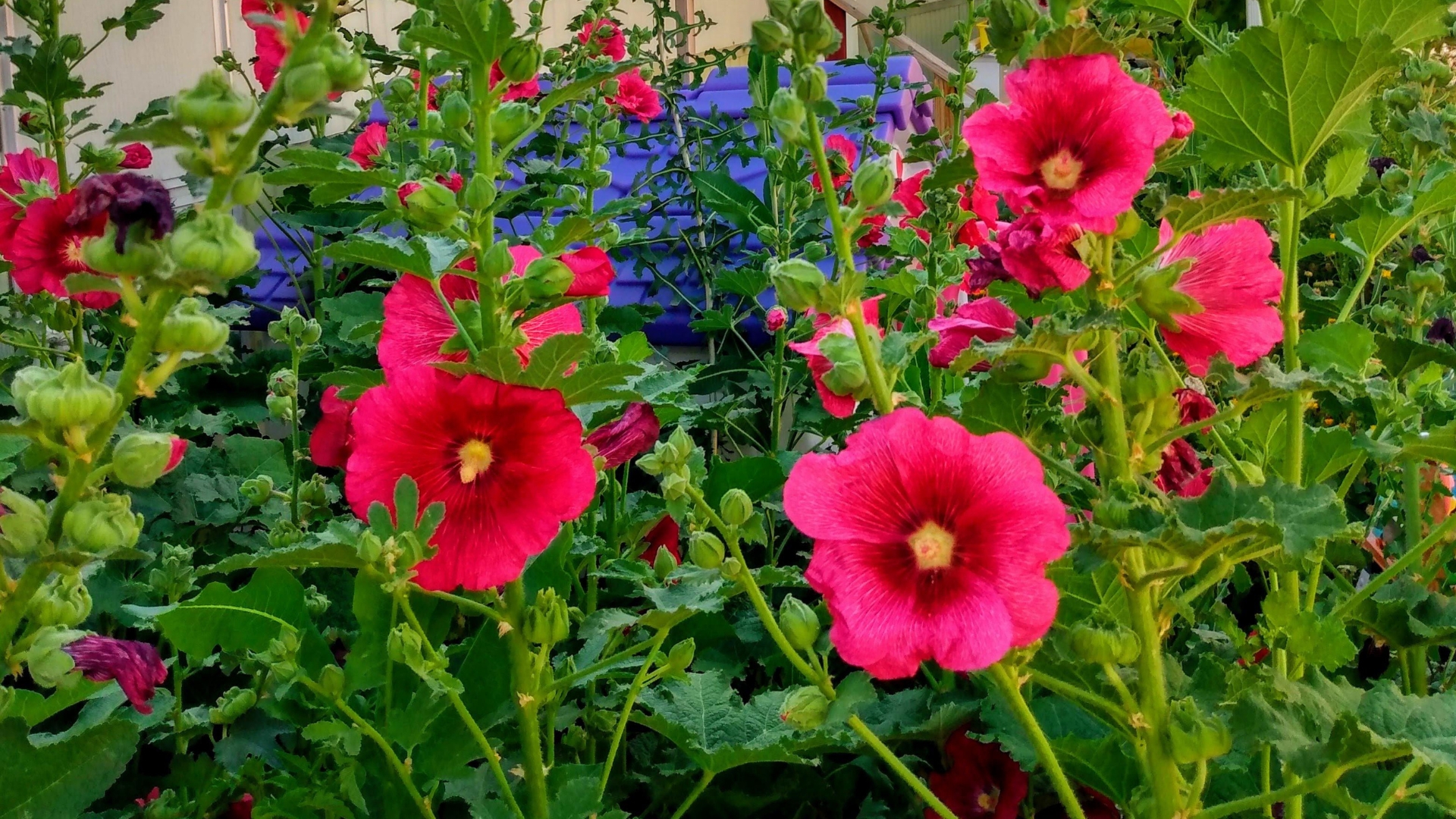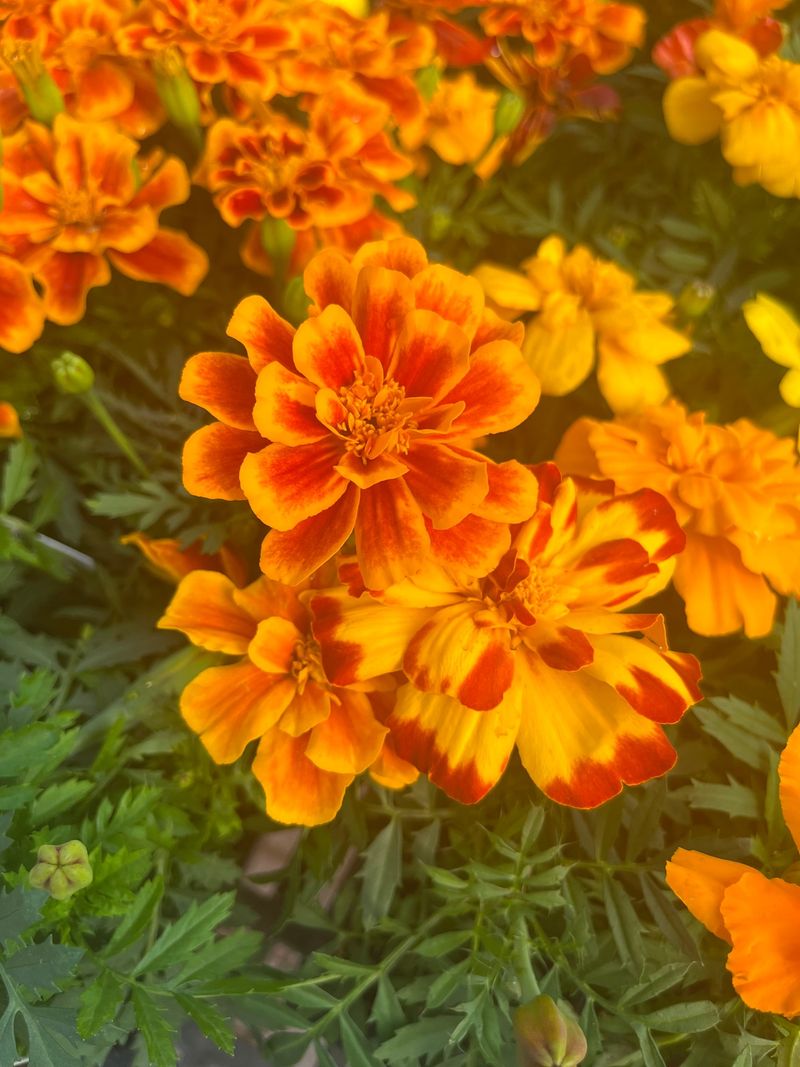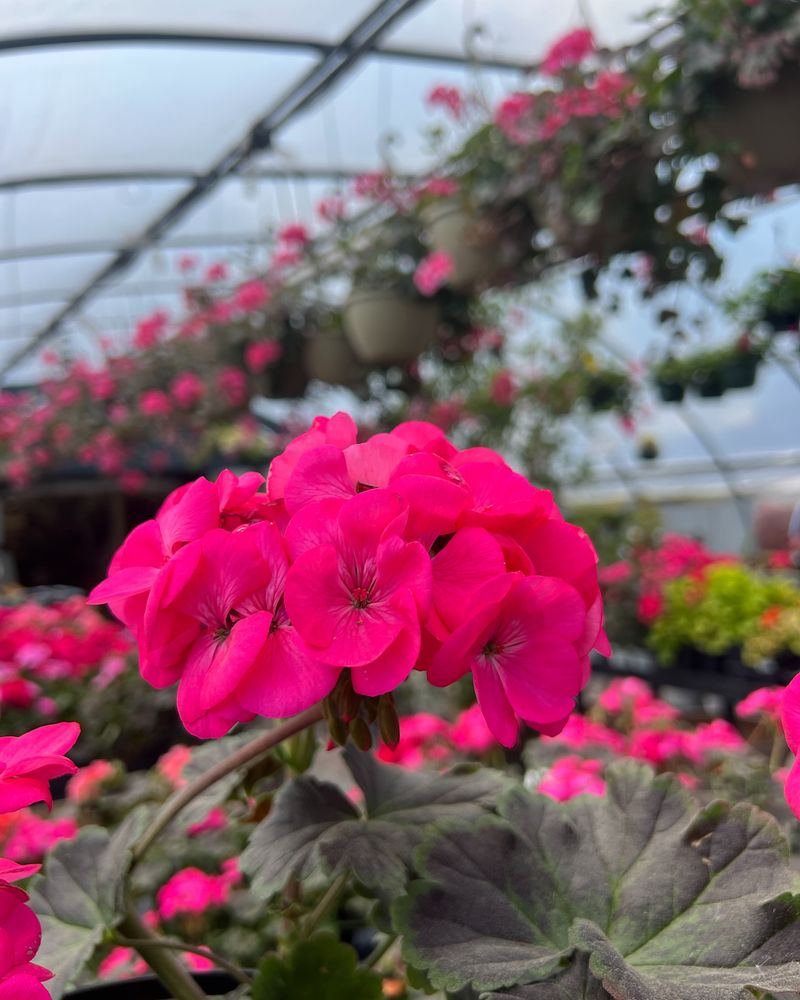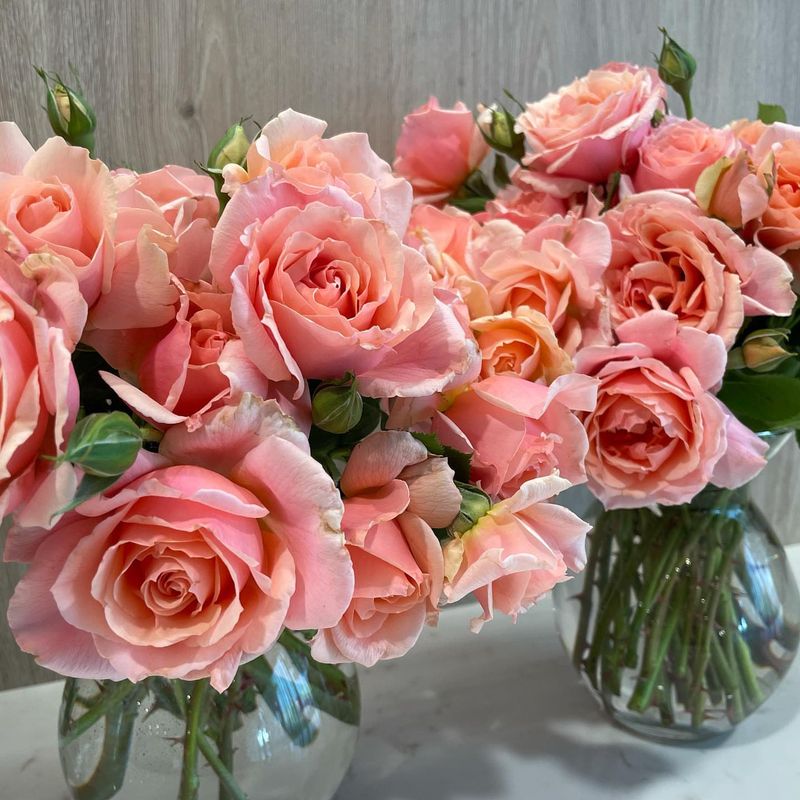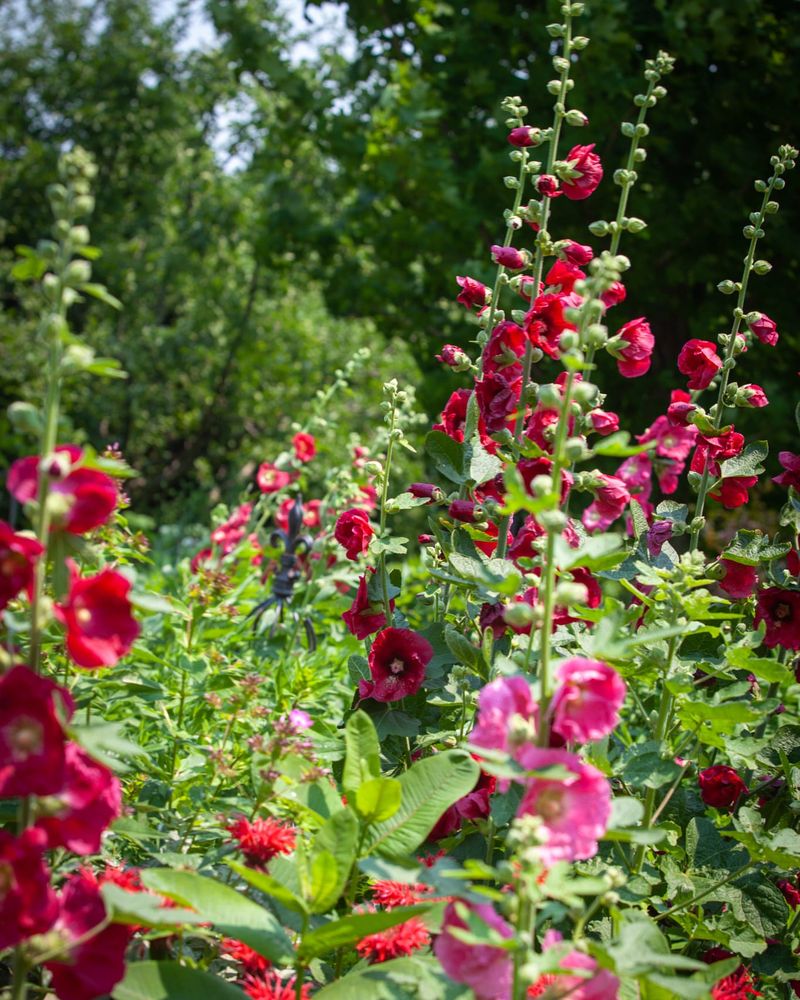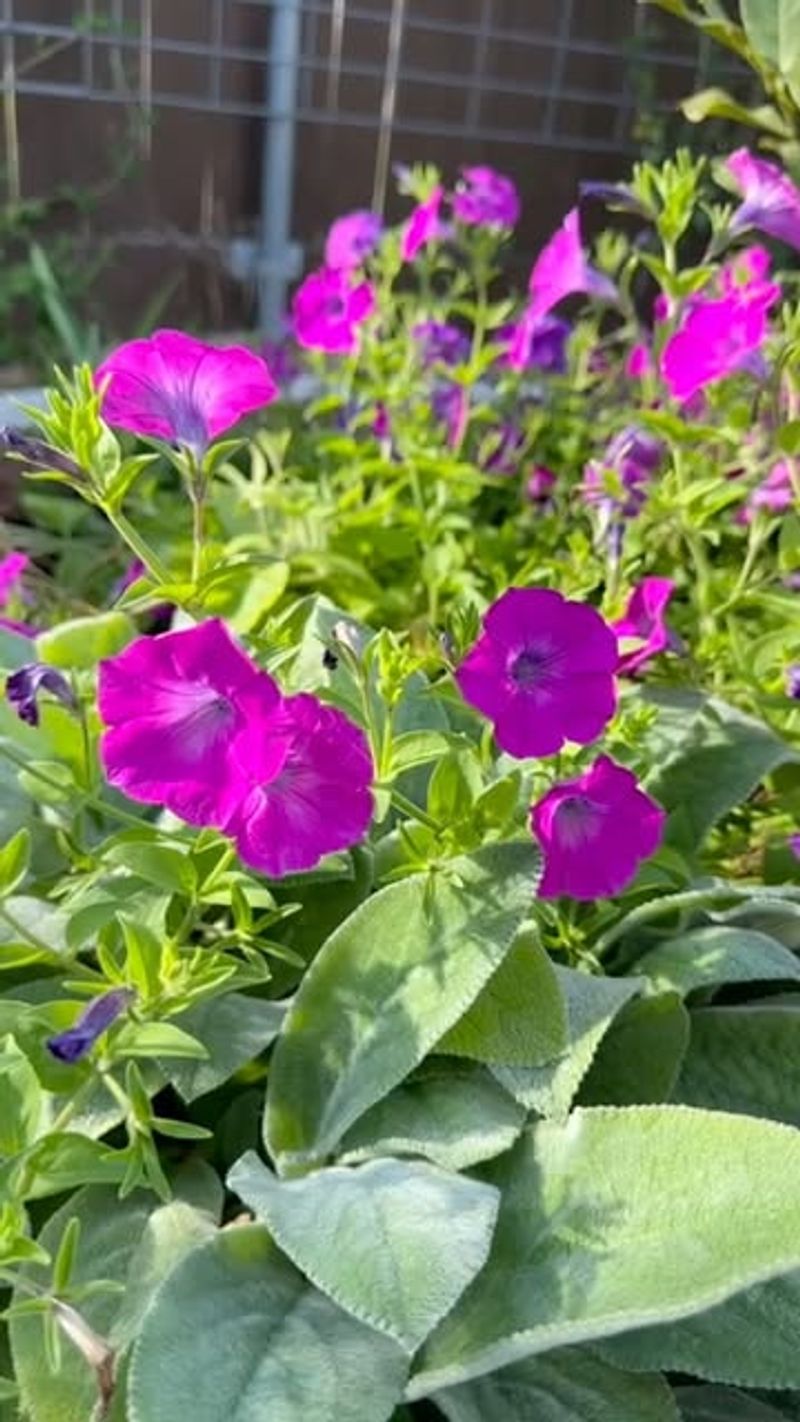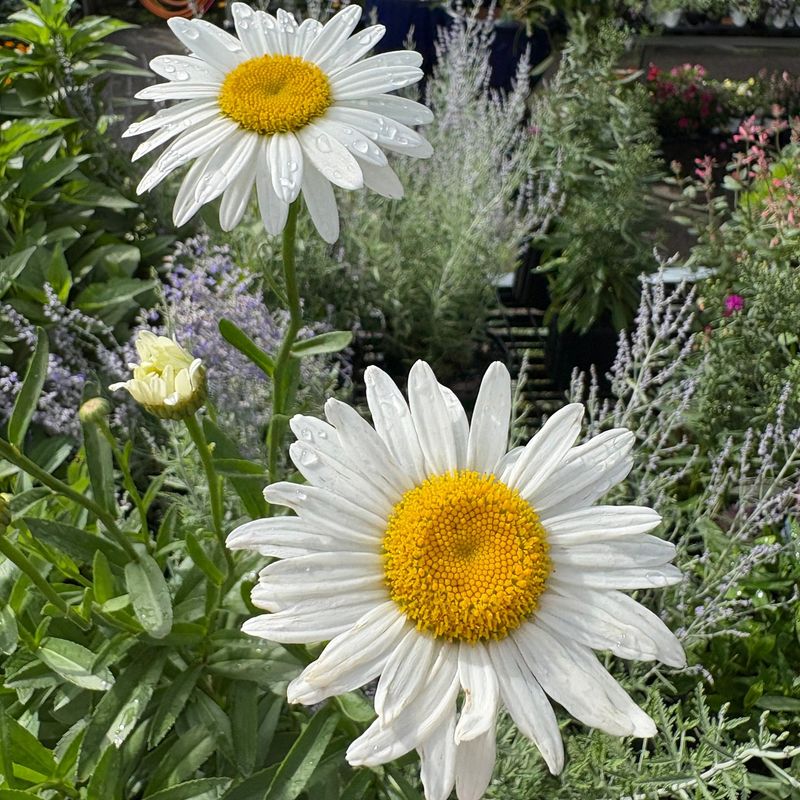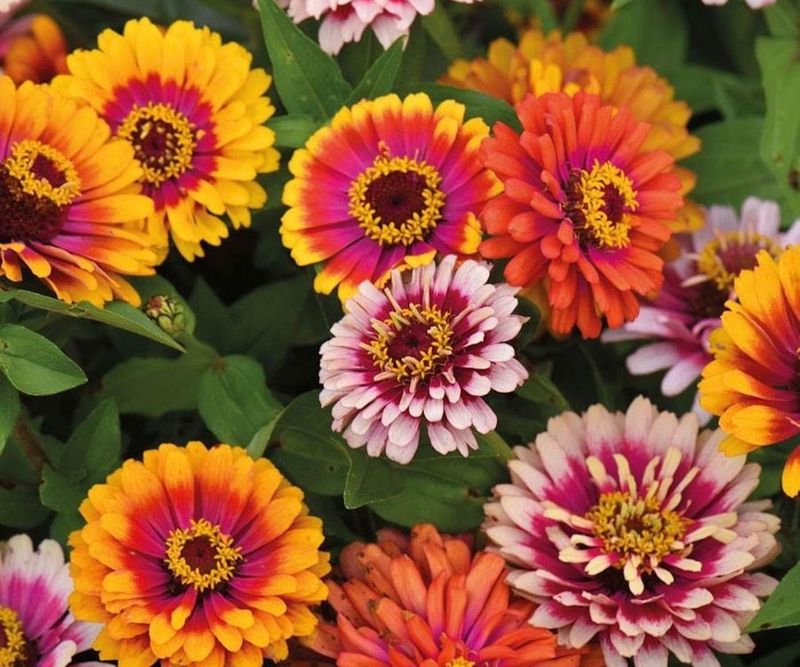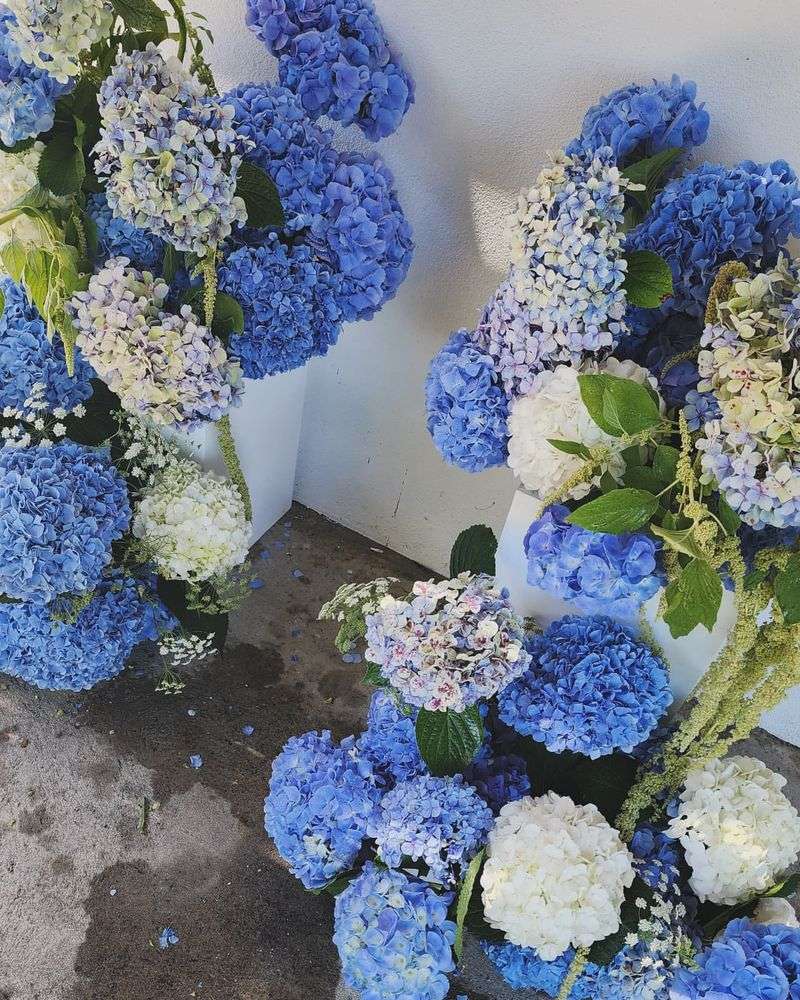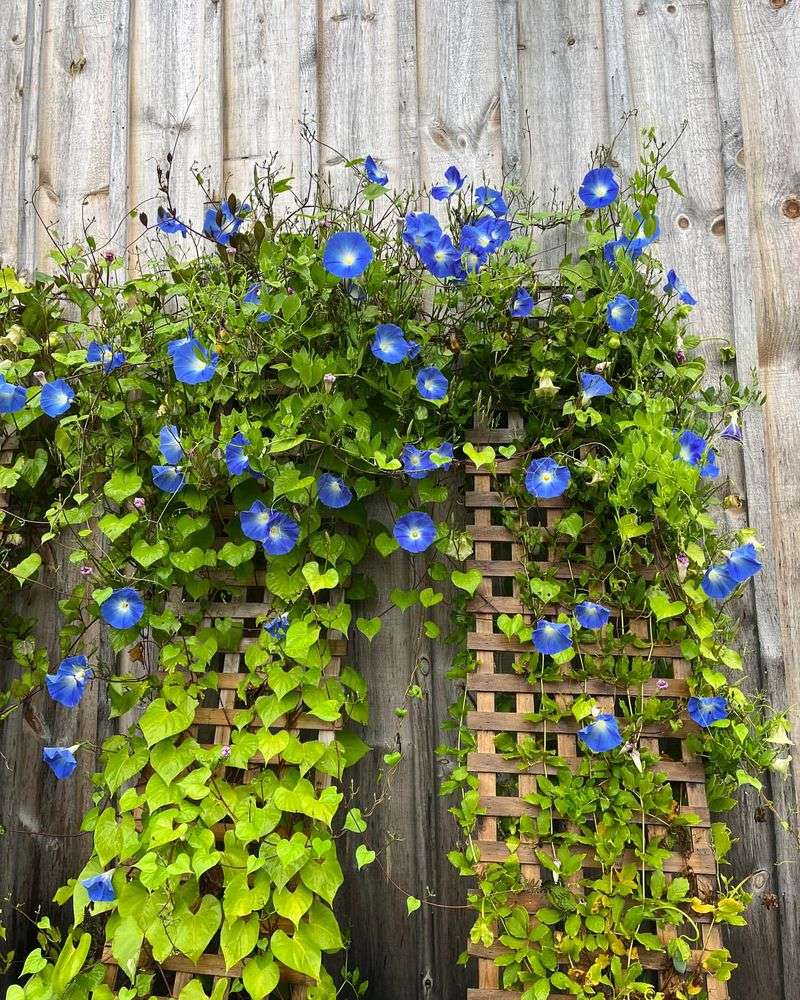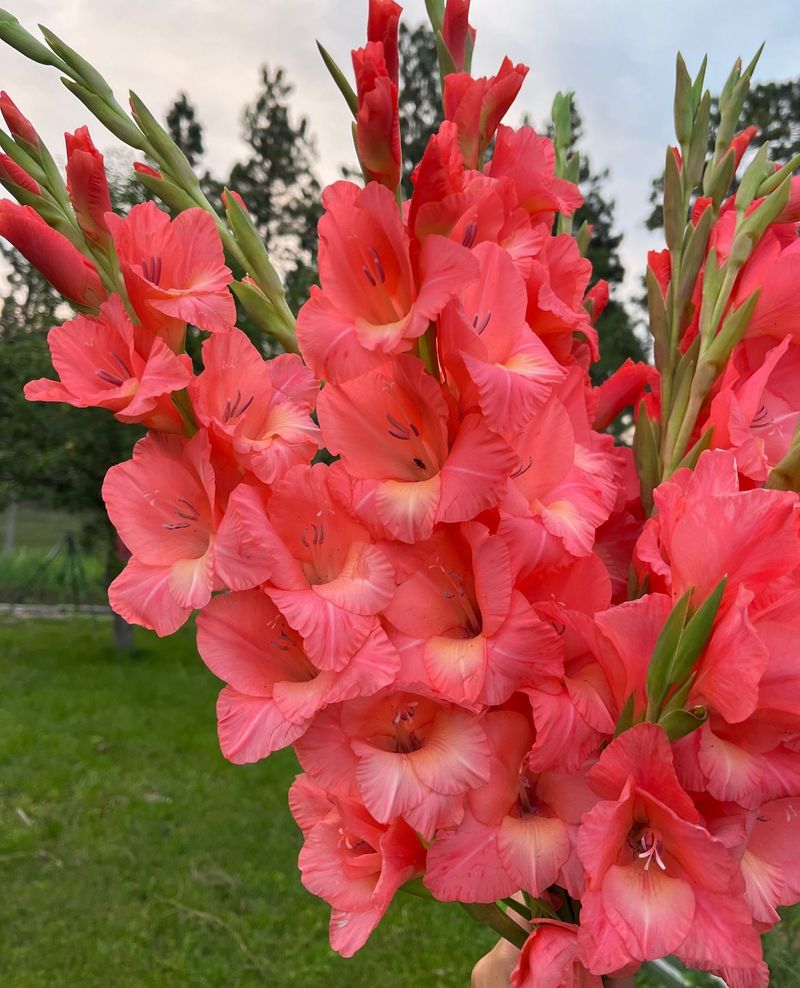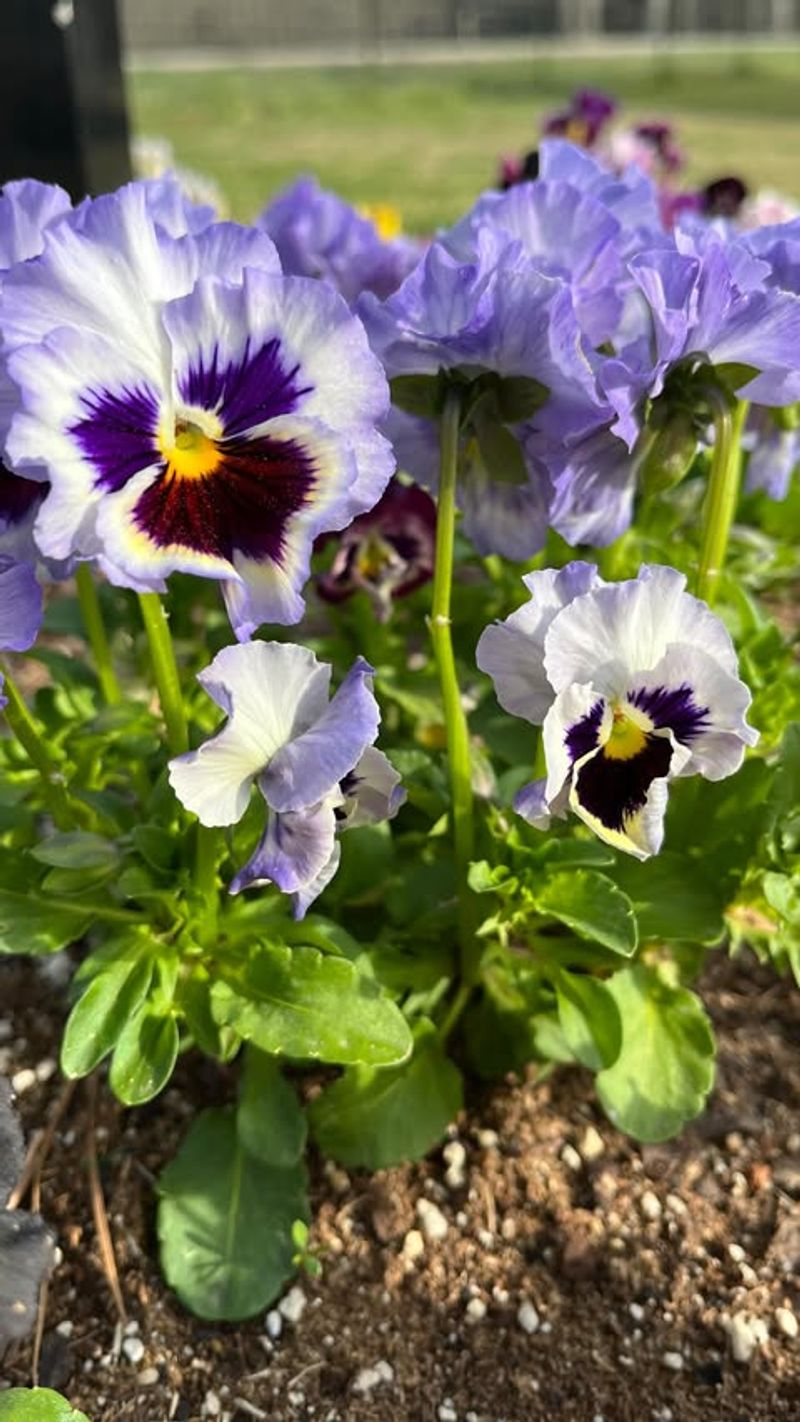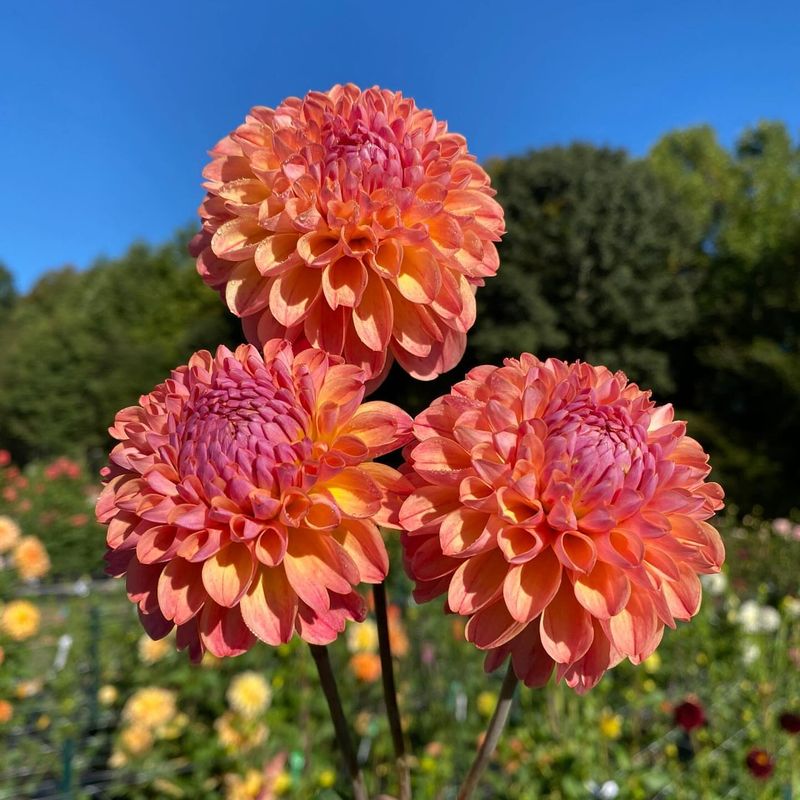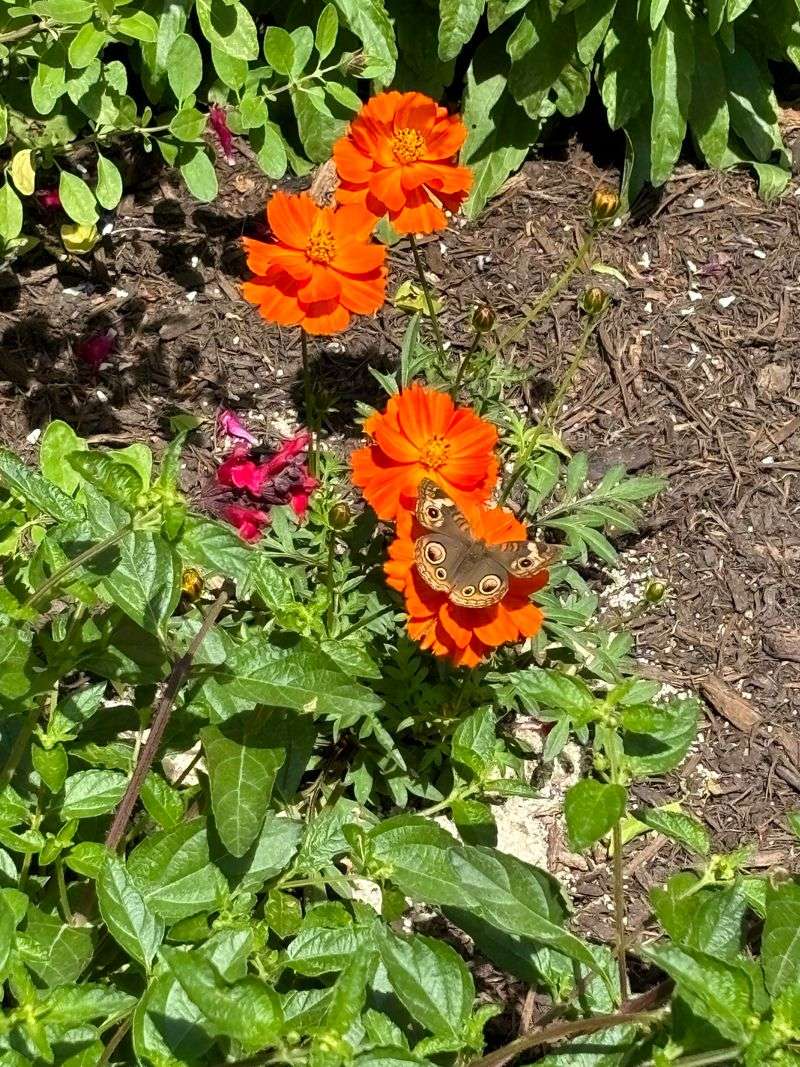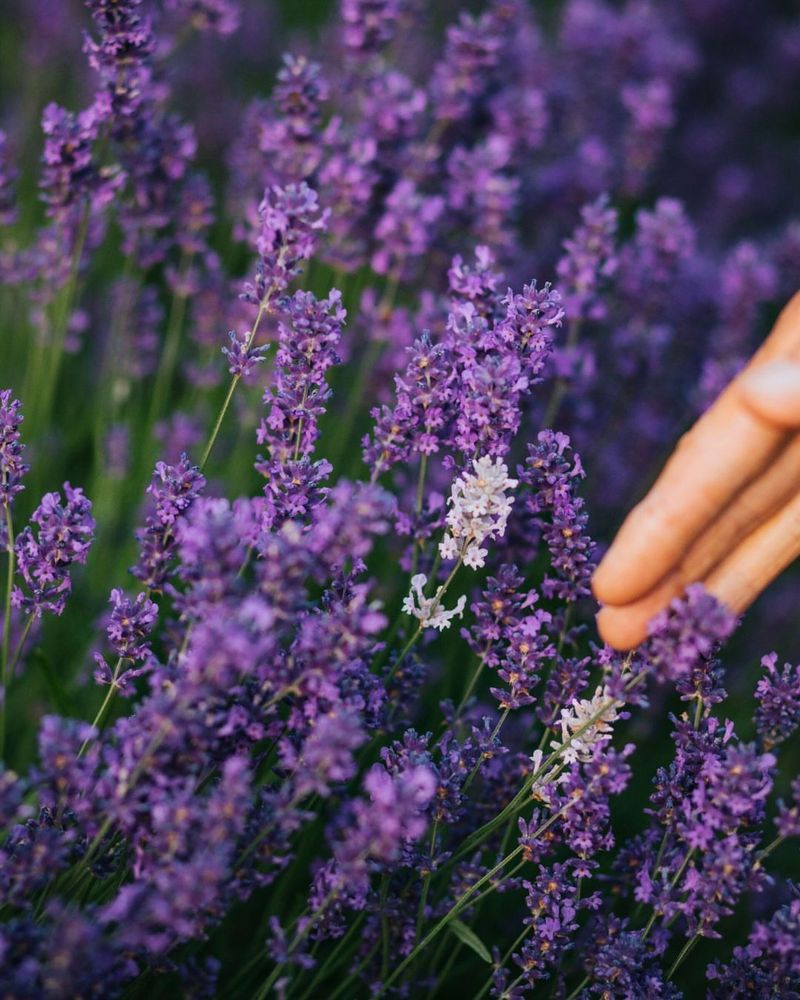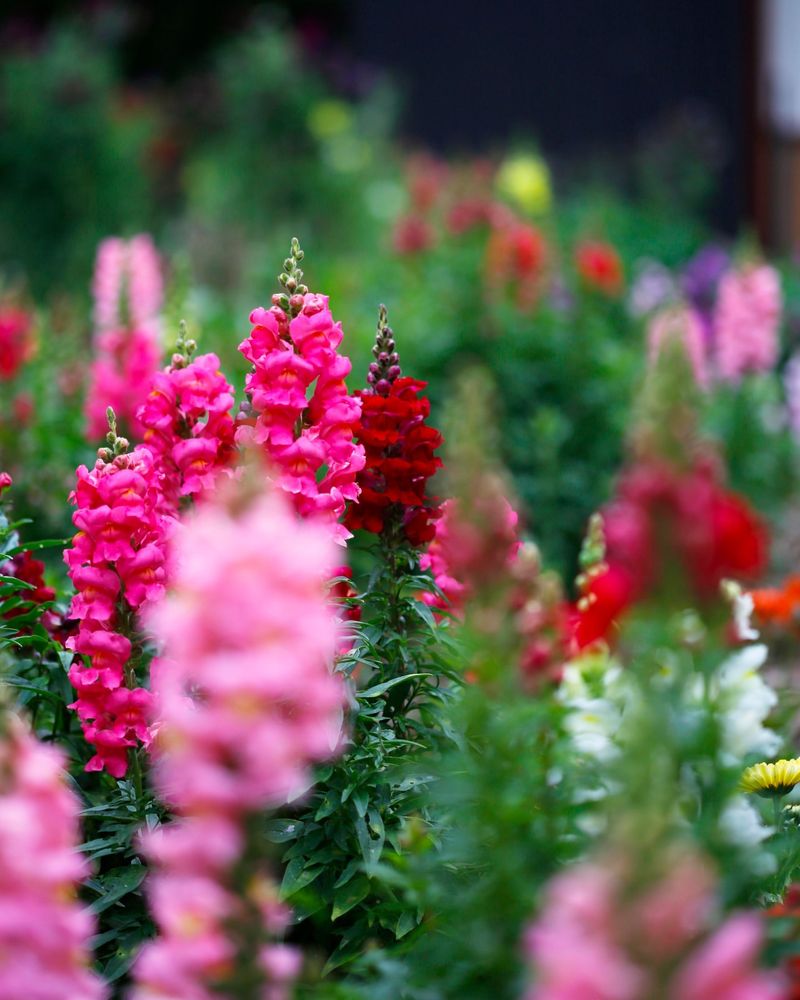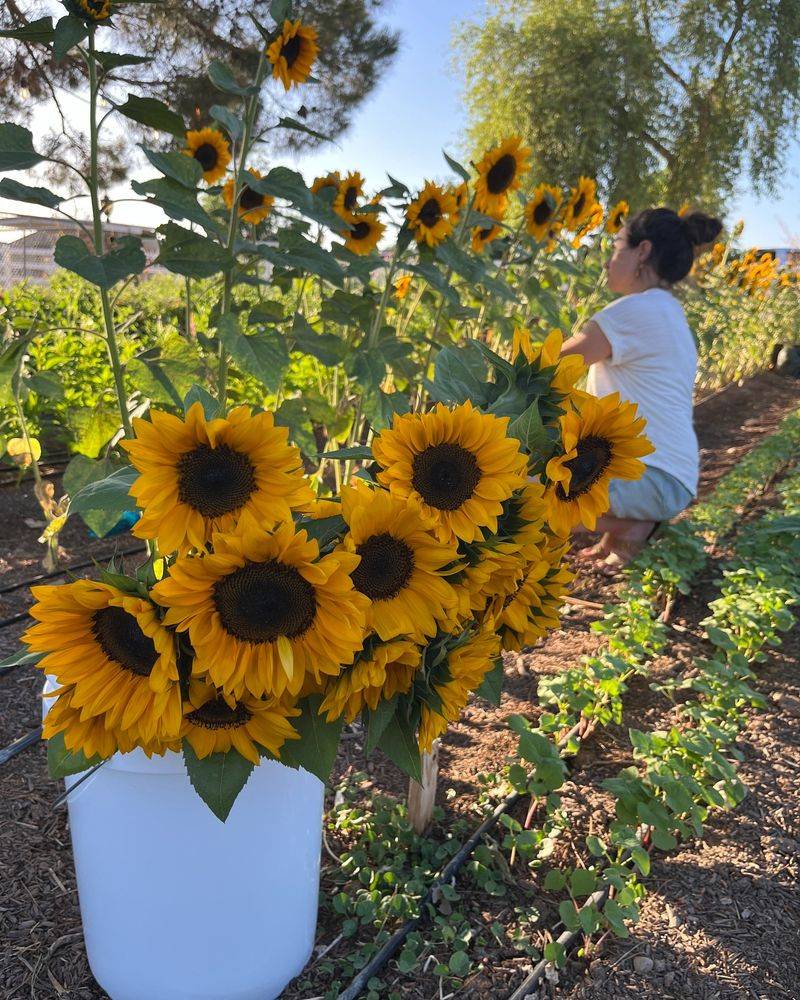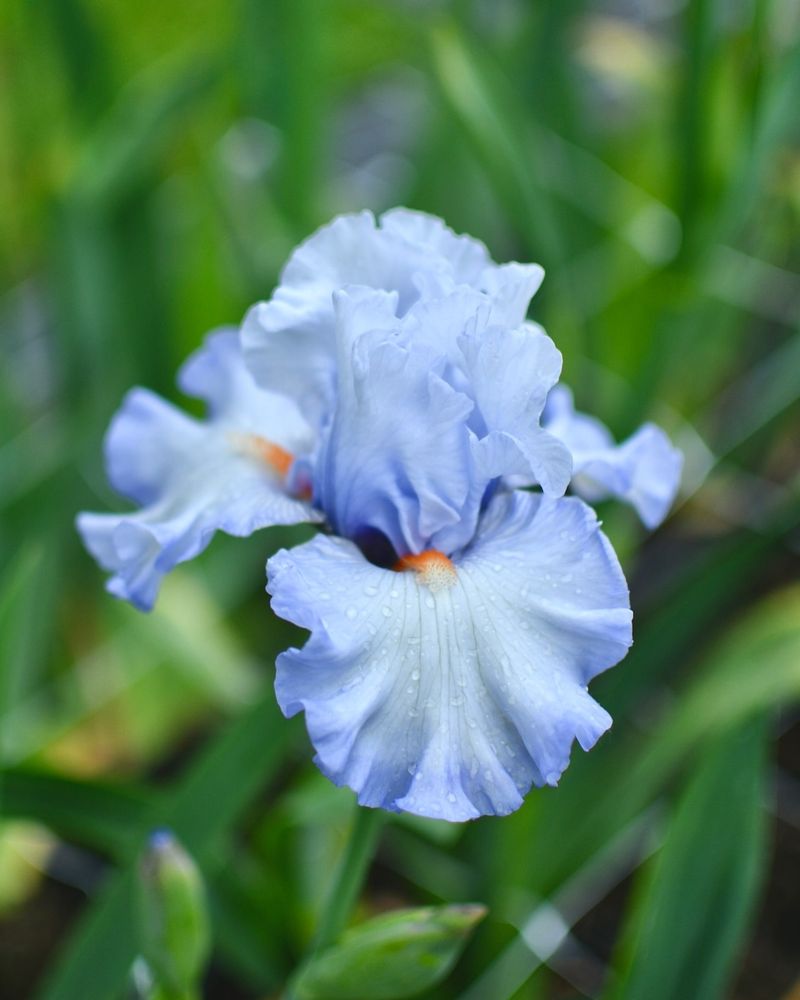Grandma’s garden wasn’t just beautiful—it was timeless. Packed with charm, fragrance, and color, her flowerbeds were filled with the kinds of blooms that never go out of style.
These 19 nostalgic flowers still hold their own today, proving that the best garden trends never fade—they just keep blooming.
1. Cheerful Marigolds
Bright orange and yellow marigolds were garden staples that Grandma relied on to keep bugs away naturally. Their spicy scent repels many garden pests while attracting helpful pollinators to vegetable patches.
Grandmas knew these hardy annuals would bloom reliably from spring until frost with almost zero maintenance. They’re perfect for beginning gardeners since they grow easily from seed and tolerate poor soil conditions.
Modern gardeners appreciate how these sunny flowers look in containers and borders while providing natural pest control – exactly what Grandma valued them for decades ago.
2. Fragrant Lilacs
Nothing announces spring quite like lilac bushes heavy with fragrant purple, white, or pink blooms. Grandma’s yard often featured these perfumed shrubs planted near windows where their sweet scent could drift indoors on spring breezes.
Once established, lilacs live for generations with minimal care, which explains why they’re often found at abandoned homesteads. Their presence marks where families once lived and gardened long ago.
Beyond their intoxicating fragrance, lilacs make wonderful cut flowers and attract butterflies to the garden – combining beauty with ecological benefits in true grandmotherly wisdom.
3. Reliable Geraniums
Grandma’s porch wouldn’t be complete without clay pots filled with bright red geraniums. These resilient flowers bloom continuously from spring through fall, providing months of color with minimal effort.
Savvy grandmothers would bring geraniums inside before winter, keeping them as houseplants on sunny windowsills. Come spring, the same plants would return to the porch, saving money on new flowers each year.
Modern gardeners appreciate geraniums for their drought tolerance and versatility. They thrive in containers, window boxes, and garden beds – bringing that same reliable splash of color Grandma loved.
4. Sweet-Scented Roses
Grandma’s roses weren’t the fussy hybrid teas popular today. She grew old-fashioned varieties like ‘Maiden’s Blush’ and ‘Old Blush’ that survived with minimal spraying or pruning, unlike their modern counterparts.
These heritage roses offered something modern roses often lack – incredible fragrance. Grandma would cut blooms to float in shallow bowls, filling her home with their sweet perfume.
Many old rose varieties are experiencing renewed popularity as gardeners seek tougher, more disease-resistant plants. Their relaxed growth habit and rich scent bring nostalgic charm to contemporary landscapes.
5. Towering Hollyhocks
Standing tall against fences and walls, hollyhocks added vertical drama to Grandma’s garden with minimal effort. These biennial plants self-seed readily, returning year after year without replanting.
Children were especially enchanted by hollyhocks. Many grandmothers taught little ones to make hollyhock dolls by turning the flowers upside down and adding toothpicks for arms.
Beyond their nostalgic charm, hollyhocks attract important pollinators like bees and butterflies. Their tall stalks covered in colorful blooms create the perfect cottage garden backdrop – just as beautiful now as in Grandma’s day.
6. Faithful Petunias
Petunias were Grandma’s go-to annual for reliable color all summer long. Available in every shade except true blue, these versatile flowers brightened up window boxes, hanging baskets, and garden borders.
Grandmothers appreciated how petunias bounced back after summer rainstorms and kept blooming through heat waves. A quick deadheading session was all they needed to refresh tired plants and encourage new flowers.
Today’s improved varieties are even more weather-resistant and self-cleaning, but they still deliver that same cheerful display that made them a staple in grandmother’s gardens for generations.
7. Carefree Daisies
Simple white Shasta daisies brought effortless cheer to Grandma’s garden borders. Their sunny yellow centers surrounded by pristine white petals created that classic flower-child look that everyone recognizes.
Grandmothers valued these perennials for their independence – once planted, daisies return reliably for years with almost no attention. They also make perfect cutting flowers, lasting over a week in vases.
Modern gardeners appreciate how daisies attract beneficial insects while requiring minimal water or fertilizer. Their timeless appeal bridges generations, looking just as fresh in contemporary gardens as they did in Grandma’s flower beds.
8. Vibrant Zinnias
Grandma relied on zinnias for dependable color from summer until frost. These heat-loving annuals produce abundant blooms in every shade of the rainbow except blue, perfect for brightening up garden corners.
Growing zinnias from seed was an economical way for grandmothers to fill flower beds without spending much money. Children often helped plant the large, easy-to-handle seeds, learning gardening basics alongside their elders.
Butterflies flock to zinnia flowers, making them as beneficial as they are beautiful. Cut a few stems for indoor arrangements, and the plants respond by producing even more blooms – a win-win Grandma understood well.
9. Abundant Hydrangeas
Massive hydrangea bushes often marked the shady corners of Grandma’s yard, producing armloads of blue, pink, or white blooms. These showstopping shrubs became family landmarks, photographed alongside multiple generations of children.
Grandmothers knew the secret of using rusty nails or coffee grounds to change hydrangea colors. This bit of garden chemistry seemed like magic to visiting grandchildren who helped with garden chores.
Besides their beauty, hydrangeas offer practical benefits – their dried blooms last for months in arrangements. Modern gardeners still treasure these reliable shrubs for their combination of spectacular flowers and minimal maintenance requirements.
10. Climbing Morning Glories
Morning glories transformed Grandma’s garden fences into walls of heart-shaped leaves and trumpet flowers that opened fresh each dawn. These vigorous annual vines grow quickly from seed, reaching impressive heights by midsummer.
Children loved checking morning glory blooms daily, since each flower lasts just one day before closing forever. Grandma often gave kids their own packet of seeds to plant, nurturing young gardeners along with her flowers.
The cheerful blue, purple, pink or white blooms cost almost nothing to grow yet create stunning vertical displays. Their ability to self-seed means that once planted, they often return year after year.
11. Graceful Gladiolus
Grandma planted gladiolus corms in rows like vegetables, creating a cutting garden that supplied dramatic flower spikes all summer long. Their tall stems covered in colorful blooms were perfect for church arrangements and special occasions.
In northern climates, grandmothers carefully dug up gladiolus corms each fall, storing them in paper bags in cool basements until spring. This ritual preserved their investment and ensured flowers for the following year.
Modern gardeners still appreciate how these stately flowers add vertical interest to gardens and provide weeks of colorful blooms for cutting – connecting us to gardening traditions passed down through generations.
12. Faithful Chrysanthemums
Fall wouldn’t be complete without Grandma’s chrysanthemums bursting into bloom as summer flowers faded. These reliable perennials provided a final colorful hurrah before winter set in.
Grandmothers appreciated how mums returned year after year, growing larger and more impressive with age. They taught us to pinch back growth until July to create bushier plants covered with more flowers.
Beyond their beauty, chrysanthemums signal the changing seasons and traditions of harvest time. Their ability to bloom amid falling temperatures and shorter days reminds us of the resilience Grandma admired – both in gardens and in life.
13. Faithful Pansies
Pansies with their cheerful “faces” were often the first flowers Grandma planted each spring. Their cold tolerance meant they could brighten up the garden while other plants were still dormant.
Grandmothers loved showing children how pansy blooms resembled little faces with whiskers. This whimsical quality made them especially appealing to young gardening helpers who were learning to appreciate flowers.
In mild climates, pansies bloom through winter, providing rare color during dreary months. Their ability to bounce back after snowfall and frost impressed practical grandmothers who valued resilience in both plants and people.
14. Bold Dahlias
Grandma’s dahlias produced dinner-plate sized blooms that became neighborhood conversation pieces. These show-stopping flowers range from delicate pompoms to massive decorative varieties in nearly every color imaginable.
Dahlia tubers were precious commodities that grandmothers carefully dug up each fall in cold climates. Stored in sawdust or peat moss, these underground treasures would multiply year after year, allowing Grandma to share divisions with friends and family.
The cutting-garden potential of dahlias made them practical as well as beautiful. One plant can produce dozens of blooms throughout summer and fall, keeping vases filled with spectacular flowers until frost.
15. Dependable Cosmos
Feathery cosmos plants dotted Grandma’s garden with daisy-like flowers in pink, white, and magenta. These airy annuals seemed to dance above their delicate foliage, adding movement and charm to garden borders.
Grandmothers appreciated how cosmos self-seed politely, returning year after year without becoming invasive. Their ability to thrive in poor soil with minimal water made them perfect for busy gardeners who couldn’t fuss over finicky plants.
Butterflies and bees flock to cosmos blooms, creating living gardens that buzz with activity. This combination of beauty, resilience, and wildlife value explains why these traditional flowers remain popular in contemporary sustainable gardens.
16. Aromatic Lavender
Lavender bushes lined Grandma’s garden paths, releasing their calming fragrance whenever visitors brushed against them. These Mediterranean herbs combine beautiful purple flower spikes with practical uses that grandmothers valued.
Harvested lavender bundles hung drying in Grandma’s kitchen, destined for sachets tucked into dresser drawers to scent linens. The dried flowers also repelled moths naturally, protecting woolen sweaters and blankets without chemicals.
Modern gardeners appreciate lavender for its drought tolerance and ability to attract beneficial pollinators. The plants thrive in poor soil and hot conditions, making them perfect low-maintenance additions to contemporary water-wise gardens.
17. Faithful Snapdragons
Snapdragons created walls of color in Grandma’s garden while delighting children with their interactive blooms. Squeezing the sides makes the “dragon” open its mouth – a garden game that spans generations.
Grandmother knew these cool-weather bloomers would flourish in spring and fall when other annuals struggled. In mild climates, snapdragons often survived winter to bloom again the following year, making them excellent values.
Available in heights from 6 inches to 3 feet, snapdragons worked everywhere from borders to backgrounds. Their ability to bloom in partial shade made them versatile problem-solvers for tricky garden spots.
18. Cheerful Sunflowers
Towering sunflowers marked the edges of Grandma’s vegetable garden, their cheerful faces following the sun throughout the day. Children competed to grow the tallest plants, measuring progress throughout summer.
Practical grandmothers appreciated how sunflowers attracted beneficial insects to the garden while providing seeds for birds in fall. Some varieties were grown specifically for harvesting seeds for roasting – nature’s perfect snack.
Beyond their beauty, sunflowers improve garden soil by drawing up nutrients from deep underground. Their ability to thrive in poor conditions while adding both joy and function to gardens makes them as valuable today as in Grandma’s time.
19. Elegant Irises
Grandmother’s garden path was often lined with elegant iris plants, their sword-like leaves providing structure even when not in bloom. The flowers themselves – ruffled and bearded – resembled exotic butterflies perched atop tall stems.
Irises were treasured family heirlooms, with rhizomes passed down through generations. Grandma would divide overcrowded clumps every few years, sharing the extras with neighbors and relatives to spread their beauty.
Despite their delicate appearance, irises are incredibly tough plants that survive extreme temperatures and poor soil. This combination of beauty and resilience made them perfect for practical grandmothers who needed reliable garden performers.

